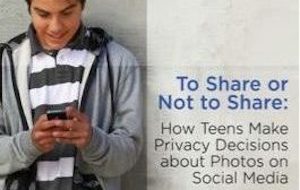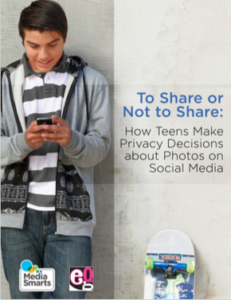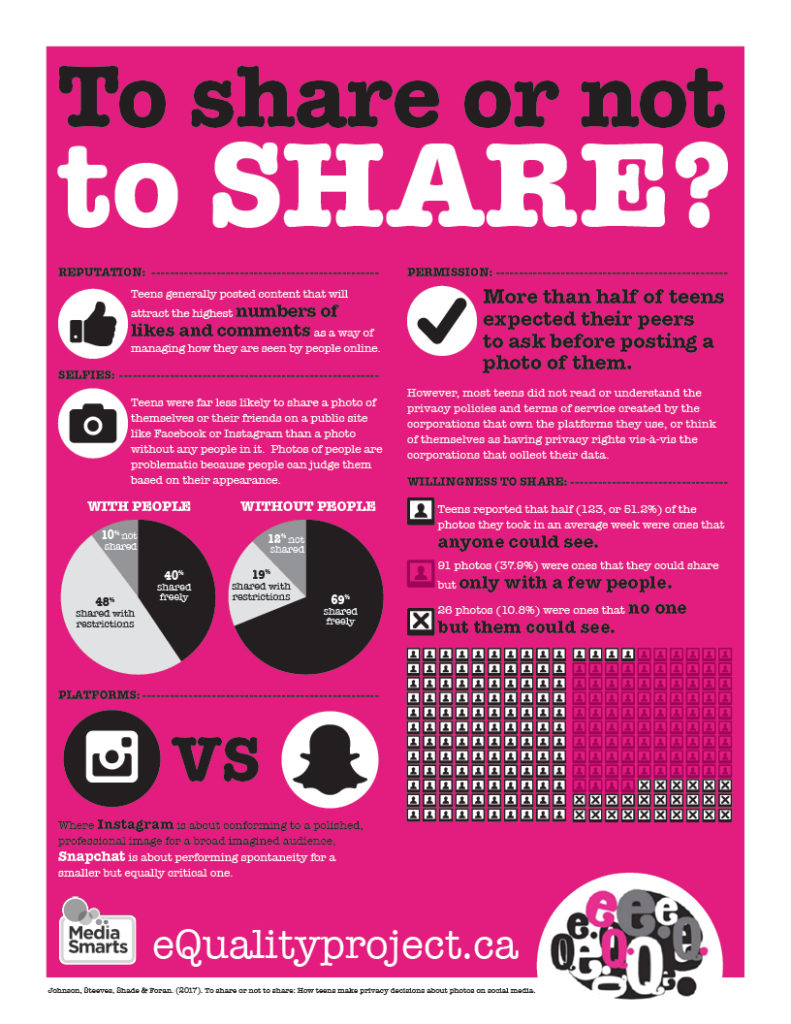
 In 2016-2017, we worked with eQuality partner MediaSmarts on a project funded by the Privacy Commissioner of Canada entitled Decision-Making and Privacy: How Youth Make Choices Relating to Reputational and Data Privacy Online (PDM). The PDM Project investigated the ways in which Canadian youth make decisions concerning personal data and reputational privacy through the selective sharing of images and videos on social media platforms such as Snapchat and Instagram.
In 2016-2017, we worked with eQuality partner MediaSmarts on a project funded by the Privacy Commissioner of Canada entitled Decision-Making and Privacy: How Youth Make Choices Relating to Reputational and Data Privacy Online (PDM). The PDM Project investigated the ways in which Canadian youth make decisions concerning personal data and reputational privacy through the selective sharing of images and videos on social media platforms such as Snapchat and Instagram.
We recruited a diverse group of 18 young people between the ages of 13 and 16 living in Ottawa, and asked them to keep a diary of photos they shared with others online over a one-week period. We then asked them to categorize each photo in one of the following categories: photos they would be comfortable sharing with lots of people; photos they would be comfortable sharing with only a few people; and, photos they would not be comfortable sharing with anyone. We then conducted 60-90 minute individual interviews with each participant to explore the steps they took when deciding which photos to post online, what personal information about themselves to disclose, and what photos and other content about their friends and/or family to share with others.
Contrary to the common rhetoric around selfie-culture, we found that our research participants were far more likely to share a photo on a public site like Facebook or Instagram without any people in it because they didn’t want to have their faces or the faces of their friends out there for people to judge them. Group shots were also favoured over photos of individuals for the same reason. In addition, sharing photos was less about expressing themselves and letting other people know what they were interested in, and more about posting content that appeals to “everyone.” For example, one girl posted photos of horses on Instagram – not because she liked horses but because they made a good Instagram “theme” that appealed to “followers.”
Thus, these photos take on a transactional character as they are designed to provide evidence that the user meets the status quo, with success being measured by the numbers of likes and comments. Interestingly however, users tend to maintain this transactional character for their notional audiences, as opposed to their close friends. When they wanted to connect with friends – i.e. be both social and networked – they selected “private” media like instant messaging or texting, precisely because the private nature of the platform meant they could relax and be themselves.
The PDM final report was co-published by eQuality Project and MediaSmarts in May 2017. The report summarizes the findings for a general audience, and is available to teachers, parents, librarians and students here.
